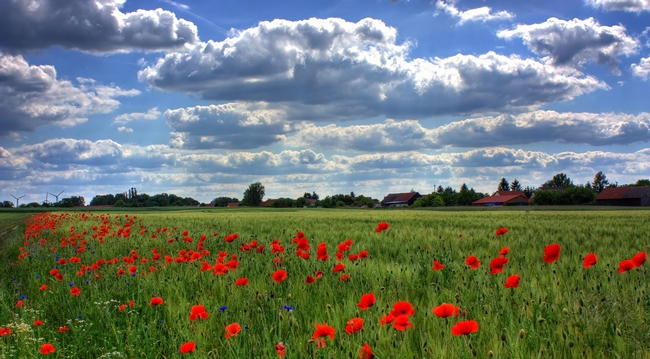How red poppies became associated with fallen soldiers:
John McCrae was born in Canada in 1872 and was a successful poet, physician, artist, and author. He served in the Boar War (1899-1902) and quickly became disillusioned about the cost of war in human lives. When England declared war against Germany at the onset of WWI, Canada quickly followed. Dr. McCrae offered his services as a doctor. In May 2, 1915 his close friend Alexis Helmer was killed by a German shell. The next day Dr McCrae looked over at a makeshift cemetery near Flanders, Belgium and noted the red poppies blooming among the simple white crosses. This moved him to write a poem, “In Flanders Fields” which instantly struck a chord and became a rallying post for events such fundraising and rallies following its publication by Punch Magazine in England in December 1915.
It was published in America in Ladies Home Journal in November 1918. Unfortunately, John McCrae had succumbed to pneumonia in France on January 28, 1918.
The inspirational poem may have faded into poetry books if not for an amazing young teacher from a small town in Georgia. Moina Michael came across the poem in Ladies Home Journal and believed it to be the symbol to commemorate fallen soldiers. She campaigned tirelessly, as a result, within three years the poppy became the symbol or remembrance. Sales of paper poppies have raised millions of dollars for ex-servicemen and –women in many countries around the world.
The Flanders poppy is botanically Papaver rhoeas and is an intense red. It is a common wildflower in many areas of Europe, growing cheerfully around the borders of wheat fields. This wild version seldom grows much more than 1ft. high, but now many hybrids in a wide variety of colors have been developed and these can readily reach 2-3ft tall under ideal conditions. As a garden plant the poppy is best direct sown from seed during the fall. It does not transplant well. Flowers will appear the next spring. It likes full sun and regular, but not excessive water.
Adapted with permission from "Of Naked Ladies and Forget-Me-Nots" by Allan M. Artimage
For more about growing these and other varieties of poppies check out: //ucanr.edu/blogs/blogcore/postdetail.cfm?postnum=24149
